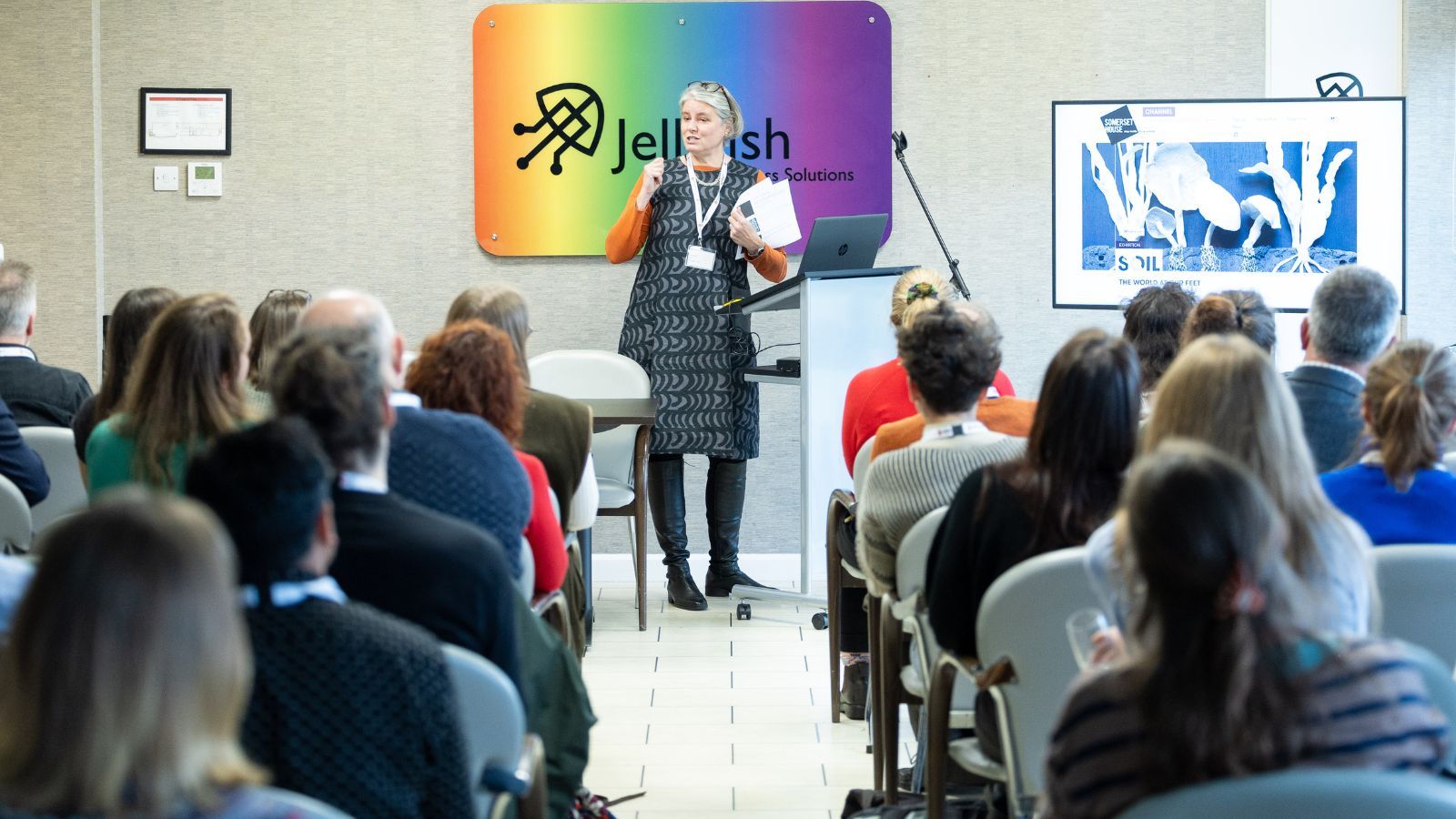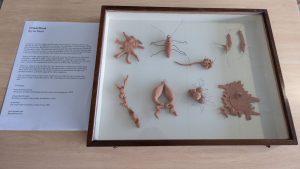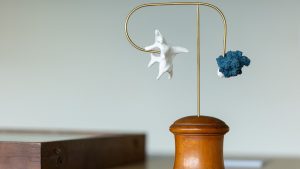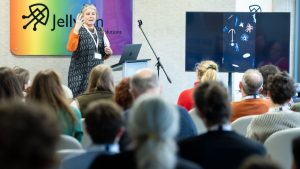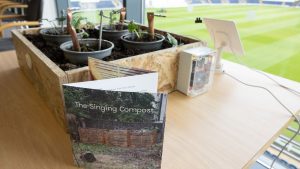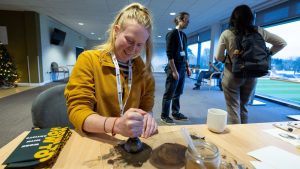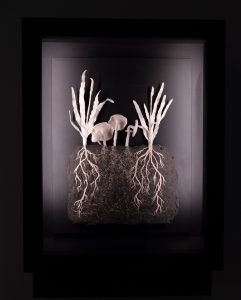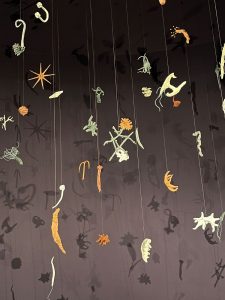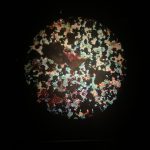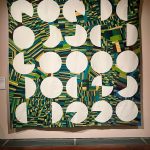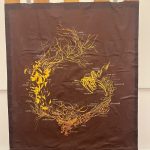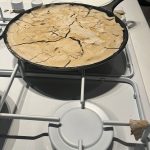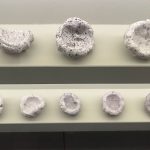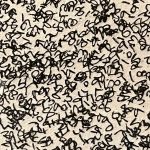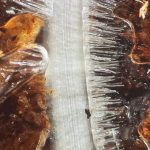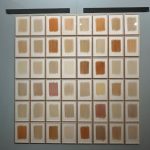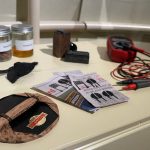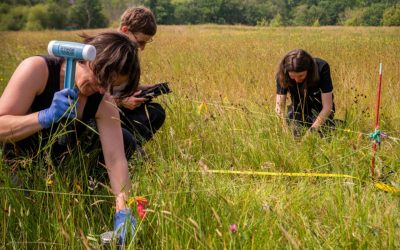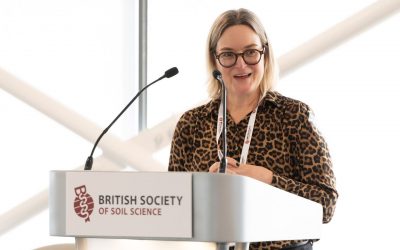Guest Blog by Jo Pearl
It was with great pleasure that I accepted an invitation from the British Society of Soil Science (BSSS) to present my most recent sculptures and clay animations about healthy soil’s biodiversity at last December’s Annual Conference. The reception from the audience was warm. Interesting conversations bloomed about humus smello-vision installation art and how to make ceramic work without costing the earth. For me the point of participating was to meet soil scientists and hopefully connect to collaborate on future artworks. The offer stands. If you have new insights you feel need communicating to the wider public and you suspect an artist like me could help – please get in touch.
The Cardiff event was a wonderful precursor to the opening in January of Somerset House’s landmark exhibition SOIL: The World at our Feet. This campaigning group show is presenting work from over 40 artists and thinkers, each bringing their diverse perspectives to this amazing hidden biome, and how humanity interacts with it. Interesting to think that Somerset House, a cutting-edge cultural hub, now in its 25th year, is choosing to celebrated this anniversary with a sweeping exhibition about soil – a subject that apparently is little appreciated in the public imagination.
The exhibition begins underground, taking the visitors into a darkened space, where my Oddkin ceramic installation glows out of the gloom, along-side Daro Montag’s wonderful series of celluloid collaborations with soil microbes, and France Bourely’s electron microscope photos of soil insects.
Oddkin is a celebration of the amazing biodiversity of the micro-organisms living in healthy soil, and yet each hanging by a thread. During autumn 2024, I sculpted over 100 ceramic beings, from rotifers to nematodes, tardigrades to amoebas and protozoa. I was delighted when Dutch artist Wim van Edmond, whose mesmerising time-lapse films in the next room, said he recognised what my hanging characters were. The title of my piece, references critical thinker Dr Donna Haraway’s work. She coined the phrase ‘making oddkin’ the notion that humans and non-humans are companion species, living symbiotically. She encourages humans to recognise and develop those bonds, important when adapting to climate disaster. For Oddkin I was keen to use my medium of clay to represent the myriad forms of these soil-dwelling microbes and enchant the viewer into connecting with these kindred spirits. Using clay to talk about soil seemed delightfully appropriate. I worked closely with the exhibition’s lighting designer so that shadows would amplify a sense of the mind-blowing numbers of micro-organisms in soil. While, a couple of electric fans are discretely set into the base of the installation, the hanging sculptures are most enlivened when visitors blow on them to set them gently swaying. Playful interaction, breathing life into the work.
- Artwork: ‘Unearthed – Mycelium’ courtesy of the artist Jo Pearl. Photo by Elsa Pearl
- Artwork: ‘Unearthed – Mycelium’ courtesy of the artist Jo Pearl. Photo by Elsa Pearl
- Artwork: ‘Unearthed – Oddkin’ Jo Pearl. (Photo from Jack Hannam)
In the next room is located, Unearthed – Mycelium my ceramic frieze that slices through topsoil revealing the symbiotic relationship between plants and fungi. Although modest in size, this piece is showcased on the exhibition’s poster which is currently splashed across the main billboard in London’s Charing Cross station. SOIL: The World at our Feet is a clarion call for the public to wake up to the wonder of soil. The exhibition runs until 13 April. I do hope you will come and discover it too.
- Somerset House, London
- ‘Pioneers in the field’ – France Bourely
- ‘This Earth’ – Daro Montag
- ‘Ghost Agriculture’ – Asuncion Molinos Gordo
- ‘Harlemville Untitled’ – Clare Richardson
- ‘Smellscape: Rhythms with Bokashi’ – Fatima Alaiwat
- ‘Soil Kitchen’ – Something & Son
- #Soil Library’ – Kim Norton
- ‘When Earth Speaks’ – Miranda Whall
- ‘Soil in Action’ – Wim van Egmond
- ‘from earth: kreta’ – Herman de Vries
- ‘Woodblock Printed Biosensors’ – Andrew Ward, Caroline Wahome, Ezekiel Mugendi Njeru, Edwin Pickstone and Aoife McGarrigle
“The exhibition was excellent. You first enter the subterranean gallery, like you are immersed in soil. It is low light with textured brown walls. You are almost feeling your way round, interacting with soil. Organisms through the works hung there. The space opens into an immersive video installation of below ground adventures. Upstairs has many perspectives exploring soil, colonialism, digital and soundscapes ending with a soil kitchen that invites your own recipes for soil.”
Jack Hannam, BSSS Past-President

